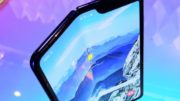A couple of weeks back I was having a conversation with our resident antenna engineer, Phil Karras. Phil’s a great resource for the science behind antennas, and I urge you to read his articles if you want deep dives into what’s going on with those metal rods on your roof.
Phil and I were discussing my statement that the coatings on modern windows can cause problems with cell service. His point is that the frequencies of UV radiation, which these coatings are intended to block, are very very different from those of cell signals. Of course, he’s right on that. It had been a while since I had done any testing to prove this assertion, and so I decided to see what I could find out.
The setup
The test environment has two parts. First there is a typical suburban home with upgraded vinyl windows. The windows themselves are “low E squared” double paned windows with an inert gas between the panes. They were installed roughly 15 years ago. Low E squared, or Low E2, is a term that means that two coats of UV-blocking have been installed on the windows. That coating is made up of very small metal flakes that are largely invisible to the naked eye. Presumably that’s one coat on each pane, although I don’t know if it would matter if it was two coats on one pane.
The other part is the measurement equipment. Here I chose the CellLinq from WilsonPro. This meter connects to your phone. It can do live measurements of several bands at once. The meter itself is capable of reading RSSI for 4G/LTE frequencies, as well as RSRP for 4G/LTE frequencies. (It will also test 3G but in the test area, 3G has been completely phased out.) For this test I will be focusing on RSSI, because I am not as interested in the meter’s ability to decode signals. I’m more interested in raw signal strength.
After initial testing, I added the WilsonPro handheld meter which will measure RSSI in the (formerly) 3G ranges as well. These frequencies are currently being used for low-band 5G in many areas, including the test area.
The home is located in an area with relatively poor cell service. I did not choose the home because of the poor cell service, but I do believe that I’ll see problems more easily with poor cell service than with good service.
The test parameters
For this test, I have removed the screen from the window. I don’t believe the screen will affect the readings but I don’t want to worry about that. The meter will be placed 6 inches from the window and taken readings with the window open as well as closed.
The hypothesis
I believe that I will see a meaningful drop in signal strength when the meter has to read signals through the windows. This hypothesis is based on the following articles:
Top 5 Surprising Things That Block Your Cell Signal | Blog | WilsonPro
Low-E Glass Leads to Poor Cellphone Signal Problems
‘Green’ building windows can block cell signals | Computerworld
It is worth noting that two of these articles are published on blogs subsidized by manufacturers. It’s also fair to point out that this blog is owned and operated by Signal Group, LLC, a seller of cell phone signal boosters.
Cold hard data
I chose two AT&T bands, one T-Mobile band and one Verizon band to measure. In the test area, AT&T uses AWS bands for much of its LTE coverage, so this will show the impact on those bands. Verizon uses its 800MHz spectrum for LTE in this area so that will be shown as well. T-Mobile’s spectrum is also in the AWS frequency range.
Initial results
| Carrier | Frequency | Open | Closed |
|---|---|---|---|
| Verizon Wireless | 885MHz | -62dBm | -65dBm |
| AT&T | 1955MHz | -75dBm | -80dBm |
| AT&T | 2112.5MHz | -71dBm | -77dBm |
| T-Mobile | 1932.5MHz | -73dBm | -80dBm |
Secondary results
After my initial testing I decided to add results from the Wilson handheld meter. This is not as sophisticated of a meter and won’t identify carriers. However it will read signal strength on the frequencies that were used for 3G until recently. This should give me some indication as to whether or not 5G signals will be affected the same way LTE ones are. I don’t have test equipment that will definitively give me information on the 600MHz bands but I can at least test the 700MHz bands. If the data isn’t conclusive, I have a spectrum analyzer I can use for those bands.
| Frequency | Open | Closed |
|---|---|---|
| 749MHz | -67dBm | -70dBm |
| 736MHz | -71dBm | -74dBm |
Conclusion
So, it seems that the data are fairly conclusive for this location. Closing the window does cut signal by between 3 and 7dBm. It seems that the higher frequencies are more affected than the lower ones. This could be due to them being weaker than the higher ones. Or it could be due to their frequency. I’m not sure and I don’t know if I could really test both hypotheses without a signal generator.
Now, this data is valid for this location and this location only. I did not try this test in multiple locations because the question was whether or not it was possible that a window could block this much signal. I believe I have proven that there is at least one scenario where it does.
7dB can be a meaningful signal loss if you are in a marginal area, and in situations like that, I recommend the use of a signal booster from SolidSignal.com. If you have questions about signal boosters or need any help, call us at 888-233-7563 or fill out the form below.





